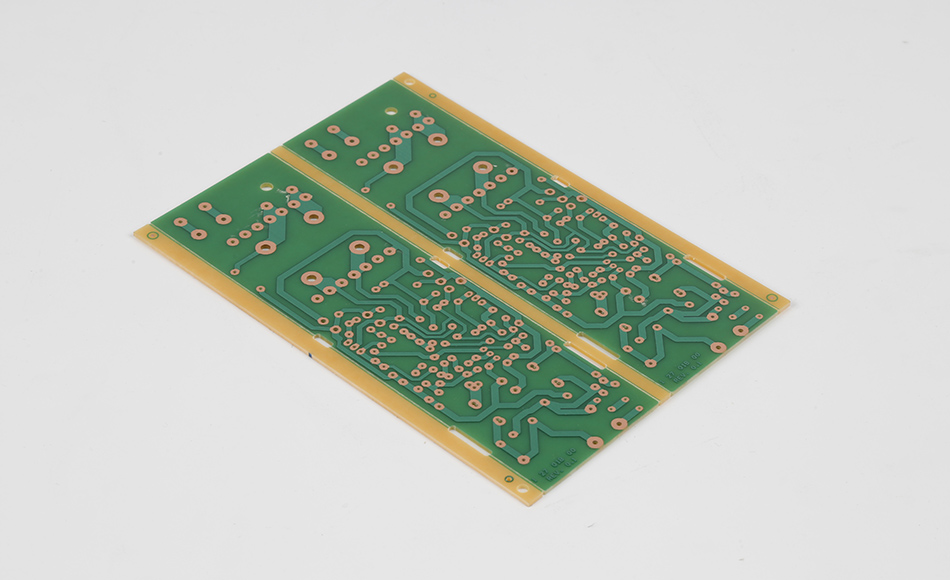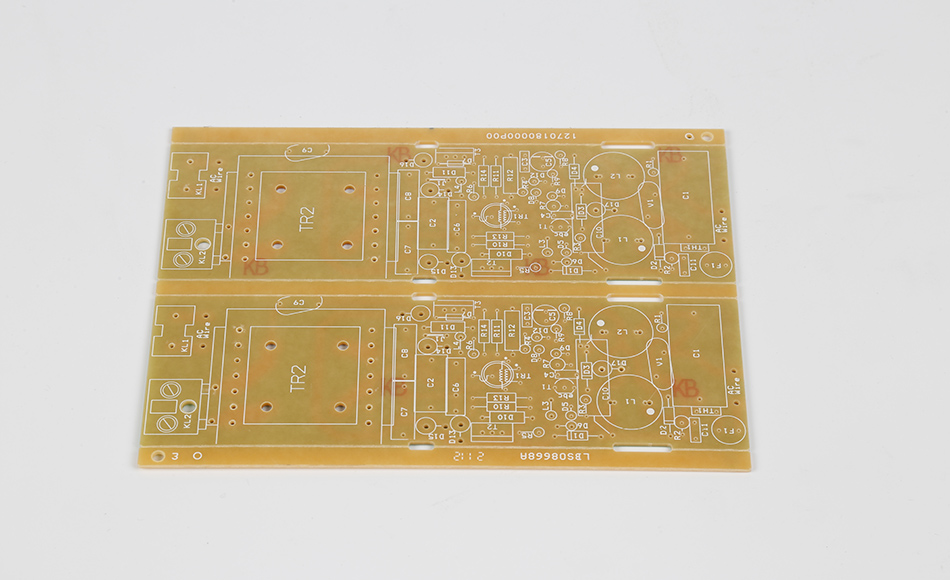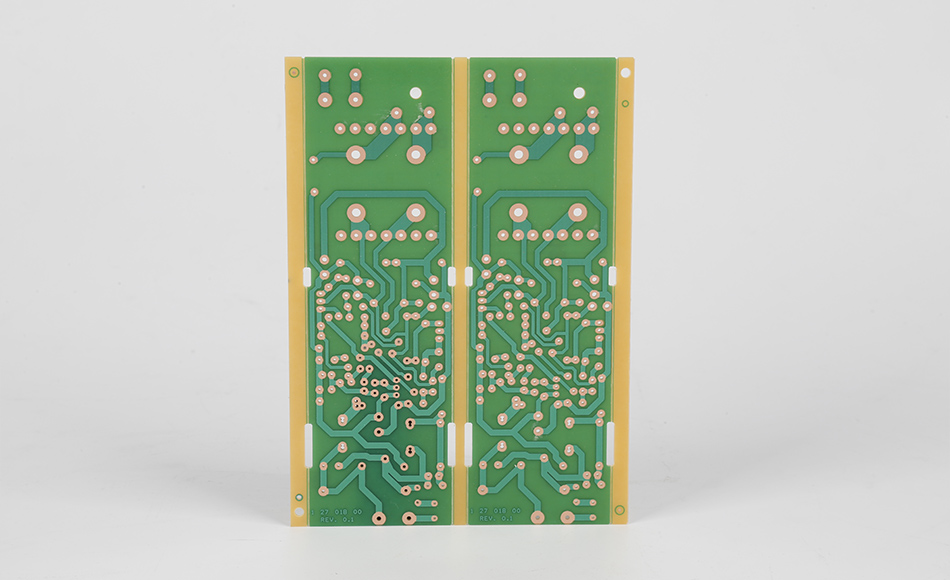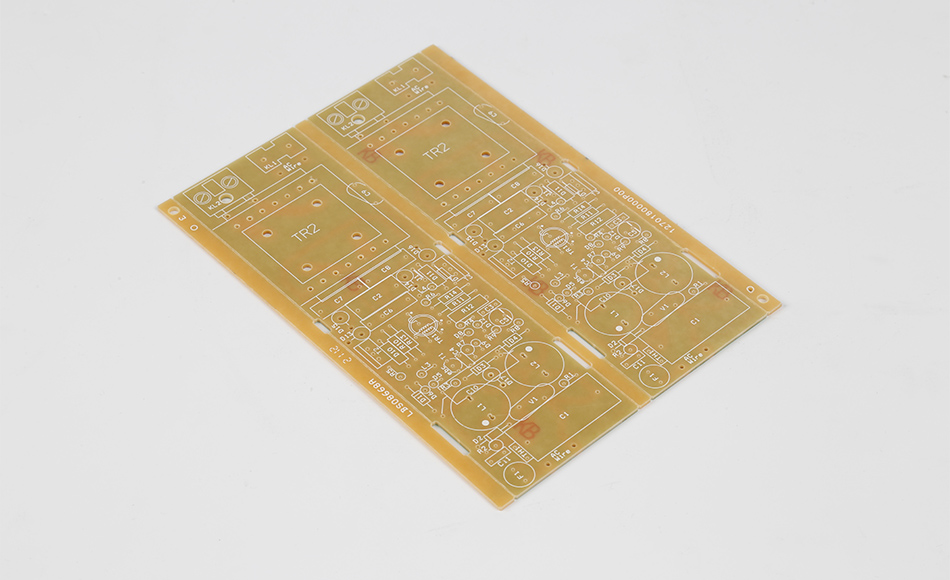-
- PCB TYPE
- PRINTED CIRCUIT BOARD PROTOTYPE ALUMINUM PRINTED CIRCUIT BOARD R&F PCB FPC HIGH FREQUENCY PCB HIGH-TG PCB HEAVY COPPER PCB HDI PCB PCB FOR LIGHTING METAL CORE PCB
time:Aug 23. 2025, 12:15:07
CEM3 PCB has emerged as a foundational enabler of modular electronics design—a trend reshaping how manufacturers develop, produce, and maintain devices across consumer, industrial, and educational sectors. Unlike rigid, one-size-fits-all substrates or high-cost specialty PCBs, CEM3 PCB balances mechanical flexibility, process compatibility, and cost-effectiveness, making it ideal for building modular systems where components (e.g., power modules, sensors, communication units) can be swapped, upgraded, or repaired independently. This modularity addresses two critical industry challenges: the need for faster product iteration (to keep up with tech advancements) and the demand for more sustainable electronics (by reducing e-waste from full-device replacements).
While CEM3 PCB is often associated with mid-tier performance, its true strength lies in its adaptability: it supports both through-hole and surface-mount components, integrates seamlessly with modular connectors, and can be tailored for specific use cases (e.g., semi-flexible designs for wearable modules) without sacrificing affordability. This article explores how CEM3 PCB enables modular electronics, its role in accelerating product development cycles, underutilized applications that leverage its versatility, and how it aligns with sustainability goals—all while maintaining the technical rigor required for professional adoption. By focusing on modularity and rapid iteration, this analysis fills a gap in prior discussions that have centered on thermal performance or high-temperature resilience, offering a fresh perspective on CEM3 PCB’s value in modern electronics ecosystems.
Modular electronics design—breaking devices into interchangeable, self-contained modules—has gained traction as manufacturers seek to:
Reduce time-to-market for new products;
Lower maintenance costs by replacing faulty modules instead of entire devices;
Minimize e-waste by extending the lifespan of reusable components;
Customize products for niche markets (e.g., adding a GPS module to industrial sensors for logistics applications).
CEM3 PCB is uniquely suited to support this design philosophy, thanks to three core attributes that address modularity’s key requirements:
Modular systems rely on PCBs that can accommodate diverse component layouts and connector types—something CEM3 PCB excels at:
Compatibility with Modular Connectors: CEM3 PCB’s stable mechanical structure supports standard modular connectors (e.g., board-to-board connectors, ribbon connectors) that link individual modules. Its rigidity ensures consistent contact pressure between connectors, preventing signal loss or intermittent connections—critical for modular systems where modules are swapped regularly.
Semi-Flexible Variants for Compact Modules: Thin-core CEM3 PCB (0.6mm or less) offers limited flexibility, allowing it to bend slightly to fit into compact modular enclosures (e.g., wearable health monitors with detachable sensor modules). Unlike fully flexible PCBs (FPCs), which are expensive and less durable, semi-flexible CEM3 PCB maintains enough rigidity to support component mounting while adapting to tight spaces.
Mechanical Durability for Repeated Handling: Modules in industrial or consumer devices are often inserted/removed during maintenance or upgrades. CEM3 PCB’s glass fiber reinforcement resists wear and tear from repeated handling, outperforming paper-based substrates like CEM1, which degrade quickly with physical stress.
Modular design requires fast iteration—testing new module configurations without overhauling manufacturing lines. CEM3 PCB’s compatibility with standard PCB processes makes it ideal for rapid prototyping and low-volume production:
Easy Customization: CEM3 PCB can be quickly redesigned (e.g., adjusting trace layouts for a new sensor module) and manufactured using standard drilling, etching, and soldering equipment. Prototyping services can deliver custom CEM3 PCB modules in 24–48 hours, compared to 5–7 days for specialty substrates like FR4 or ceramic.
Scalability from Prototype to Mass Production: A modular design tested on CEM3 PCB prototypes can transition directly to high-volume production without retooling. This scalability is critical for startups or small manufacturers that need to validate a modular concept before investing in large-scale manufacturing.
Compatibility with Mixed Component Types: Modular systems often combine legacy through-hole components (e.g., power resistors) with modern surface-mount devices (e.g., microcontrollers). CEM3 PCB supports both, eliminating the need for separate substrates for different component types and simplifying module integration.
Modular design only delivers value if individual modules are affordable to produce and replace. CEM3 PCB’s cost structure aligns with this requirement:
Lower Per-Unit Costs: CEM3 PCB costs 30–50% less than FR4 and 70–80% less than FPCs, making it feasible to produce modular components at scale. For example, a modular IoT sensor node using CEM3 PCB costs \(2–\)3 per module, compared to \(5–\)7 for an FR4-based equivalent.
Reduced Replacement Costs: If a single module (e.g., a communication module in a smart home hub) fails, replacing just that CEM3 PCB-based module costs a fraction of replacing the entire device. This lowers maintenance costs for end-users and reduces the financial barrier to adopting modular systems.
Minimal Waste in Production: CEM3 PCB’s high yield rate (95%+ in mass production) reduces scrap, aligning with the sustainability goals of modular design. Unlike specialty substrates, which often have lower yields due to complex manufacturing processes, CEM3 PCB’s simplicity minimizes waste.

Modular electronics rely on four key principles: standardization, interoperability, scalability, and maintainability. CEM3 PCB addresses each principle through targeted properties and design flexibility:
For modules to be interchangeable, their electrical and mechanical interfaces must follow standards (e.g., pin spacing, voltage ratings). CEM3 PCB supports this by:
Consistent Dimensional Tolerances: CEM3 PCB maintains tight tolerances (±0.1mm for thickness, ±0.05mm for hole placement) across production batches, ensuring modular connectors align perfectly between modules. This consistency is critical for standards like the IoT Modular Interface Standard (IMIS), which requires uniform connector placement.
Compliance with Industry Standards: CEM3 PCB meets global standards for flammability (UL94 V-0), electrical insulation (IEC 60249), and environmental performance (RoHS). This compliance ensures modular systems using CEM3 PCB can be certified for use in diverse markets (e.g., EU, North America, Asia) without redesign.
Modular systems often mix modules from different manufacturers, requiring PCBs that support universal communication protocols (e.g., I2C, SPI, USB-C). CEM3 PCB enables this interoperability by:
Stable Signal Integrity for Communication Protocols: CEM3 PCB’s dielectric properties (stable Dk and Df at frequencies up to 2 GHz) ensure reliable data transmission between modules using high-speed protocols like USB 3.0 or Ethernet. This stability prevents signal degradation that could cause communication failures between modules.
Support for Power Distribution: Modular systems share power across modules, requiring PCBs that can handle varying current loads. CEM3 PCB’s copper cladding (available in 1oz–3oz thicknesses) supports power distribution up to 10A, enough for most consumer and industrial modular systems.
As user needs evolve, modular systems should allow adding new modules (e.g., a camera module to a industrial sensor) without rewriting firmware or reconfiguring the entire device. CEM3 PCB supports this scalability by:
Flexible Layer Configurations: CEM3 PCB is available in 1–8 layer designs, allowing manufacturers to scale module complexity (e.g., adding more layers for a higher-density processing module) without changing the base substrate. This flexibility means a modular system’s core PCB design can remain unchanged as new modules are added.
Compatibility with Add-On Components: CEM3 PCB’s surface allows for easy integration of add-on components (e.g., headers, sockets) that enable plug-and-play module expansion. For example, a base CEM3 PCB for a smart thermostat can include empty headers to add a humidity sensor module later.
A key benefit of modularity is easy maintenance—replacing a faulty module instead of the entire device. CEM3 PCB enhances maintainability by:
Robust Solder Joints: CEM3 PCB’s thermal stability ensures solder joints remain intact during repeated module insertion/removal. Unlike FPCs, which are prone to solder joint fatigue from bending, CEM3 PCB’s rigidity reduces stress on joints, extending their lifespan.
Clear Visual Inspection: CEM3 PCB’s uniform surface and color contrast between copper traces and solder mask make it easy to visually inspect for defects (e.g., loose connectors, damaged traces) during maintenance. This simplifies troubleshooting and reduces repair time.

While CEM3 PCB is widely used in consumer and industrial modular systems, several niche applications leverage its versatility in innovative ways—often overlooked in discussions focused on high-performance substrates:
Modular electronics is a cornerstone of STEM education, where students learn by building and reconfiguring circuits. CEM3 PCB is ideal for educational kits because:
Affordability for Classroom Use: CEM3 PCB-based modules (e.g., power supplies, sensor modules) cost less than $1 each in bulk, making them accessible for schools with limited budgets.
Durability for Student Handling: CEM3 PCB’s resistance to bending and impact withstands rough handling by students, unlike fragile FPCs or thin FR4.
Compatibility with Open-Source Platforms: CEM3 PCB modules work seamlessly with open-source platforms like Arduino or Raspberry Pi, allowing students to integrate custom modules into existing projects. For example, a CEM3 PCB-based temperature sensor module can plug directly into an Arduino board, teaching students about modular sensor integration.
Modular design is even relevant for disposable electronics (e.g., medical diagnostic devices, environmental monitoring sensors) where cost and sustainability intersect. CEM3 PCB supports this by:
Low Cost for Single-Use Modules: CEM3 PCB’s low production cost makes it feasible to produce modular disposable devices (e.g., a glucose meter with a replaceable test strip module) that are affordable for consumers.
Recyclability of Reusable Modules: While the disposable module (e.g., a test strip interface) is discarded, the core CEM3 PCB module (e.g., the display and processing unit) can be reused with new disposable modules, reducing e-waste.
Small-scale mobile robots (e.g., educational robots, delivery drones) rely on modular designs to adapt to different tasks (e.g., adding a gripper module or a camera module). CEM3 PCB is well-suited for this because:
Lightweight Design: CEM3 PCB is 20–25% lighter than FR4, reducing the robot’s overall weight and extending battery life.
Vibration Resistance: CEM3 PCB’s layered structure resists vibration-induced damage, critical for robots operating on uneven surfaces. For example, a modular delivery drone using CEM3 PCB modules can withstand the vibration of takeoff and landing without component failure.
Agricultural sensors (e.g., soil moisture sensors, pest detection cameras) are often deployed in remote areas and need to be modular for easy maintenance. CEM3 PCB supports this by:
Moisture Resistance: CEM3 PCB’s epoxy resin resists moisture absorption, making it suitable for outdoor agricultural environments. Unlike paper-based CEM1, which degrades in humid conditions, CEM3 PCB modules maintain performance for 2–3 years in the field.
Compatibility with Solar Power Modules: Modular agricultural sensors often use solar panels for power. CEM3 PCB’s ability to handle low-voltage power distribution (3.3V–12V) makes it easy to integrate solar modules with sensor modules.

While modular design offers significant benefits, it also presents challenges—e.g., ensuring module compatibility, managing signal interference between modules, and maintaining mechanical stabilit CEM3 PCB addresses these challenges through practical design and material properties:
As modular systems evolve, new modules must work with older ones—a challenge known as “backward compatibility.” CEM3 PCB supports this by:
Stable Material Properties: CEM3 PCB’s electrical and mechanical properties (e.g., dielectric constant, flexural strength) have remained consistent for decades, ensuring that a module designed on CEM3 PCB today will work with a module designed 5 years ago.
Flexible Design Rules: CEM3 PCB’s tolerance for minor design variations (e.g., slight changes in trace width) allows manufacturers to update modules without breaking compatibility with older versions. For example, a new communication module with updated firmware can use the same CEM3 PCB footprint as the old module, ensuring it plugs into existing systems.
Modular systems with multiple modules (e.g., a smart home hub with power, communication, and sensor modules) are prone to electromagnetic interference (EMI) between modules. CEM3 PCB mitigates this by:
Ground Plane Integration: CEM3 PCB supports multi-layer designs with dedicated ground planes, which absorb EMI and prevent signal cross-talk between modules. For example, a 4-layer CEM3 PCB module can include a ground plane between the power and signal layers, reducing interference by 40–50%.
Shielding Compatibility: CEM3 PCB’s rigid surface allows for easy attachment of EMI shielding (e.g., copper tape, metal cans) around sensitive modules (e.g., GPS modules). This shielding is more effective on CEM3 PCB than on flexible substrates, which can warp and create gaps in the shield.
Modular systems often have tight enclosures where modules are packed closely together, requiring PCBs that maintain their shape under pressure. CEM3 PCB addresses this by:
High Flexural Strength: CEM3 PCB’s flexural strength (150–200 MPa) is sufficient to withstand the pressure of tightly packed enclosures, preventing warping that could disrupt module connections.
Dimensional Stability Under Temperature Changes: CEM3 PCB’s moderate coefficient of thermal expansion (CTE) ensures it maintains its shape in temperature swings (e.g., -20°C to 60°C for consumer electronics), preventing modules from shifting in the enclosure and losing contact.

Modular electronics is a key driver of the circular economy—reducing e-waste by extending device lifespans and enabling component reuse. CEM3 PCB enhances this sustainability by:
Instead of discarding an entire device when one component fails, users can replace just the faulty CEM3 PCB-based module. For example, a smart TV with a modular power supply: if the power module fails, replacing the CEM3 PCB-based power module (costing \(10–\)15) avoids discarding the entire TV (valued at \(500–\)1,000). This reduces e-waste by 80–90% for modular devices compared to non-modular equivalents.
CEM3 PCB’s durability allows modules to be reused in new devices. For example, a CEM3 PCB-based Bluetooth module from a retired smartphone can be repurposed into a DIY smart light system, extending the component’s lifespan by 2–3 years. Unlike FR4, which is often difficult to disassemble without damaging components, CEM3 PCB’s structure allows for safe component removal and reuse.
CEM3 PCB is more recyclable than many other substrates:
Material Separation: CEM3 PCB’s glass fiber and copper components can be separated using mechanical shredding and chemical processes, with copper recovery rates exceeding 95%.
Low-Impact Manufacturing: CEM3 PCB’s production process uses less energy and fewer toxic chemicals than FR4 or ceramic substrates, reducing its carbon footprint by 20–25% compared to FR4.
These sustainability benefits make CEM3 PCB a preferred choice for manufacturers aiming to meet circular economy targets, such as the EU’s Circular Economy Action Plan or Apple’s goal to use 100% recycled materials in products by 2030.

As modular electronics evolve, CEM3 PCB is adapting to meet new demands—from higher integration to smarter functionality—while retaining its core advantages of versatility and affordability:
3D printing of electronics (e.g., inkjet printing of conductive traces) is becoming more accessible, and CEM3 PCB is emerging as a compatible substrate. Its porous non-woven core allows for better adhesion of printed inks, enabling rapid prototyping of custom modular components (e.g., a sensor module with a 3D-printed antenna). This integration reduces prototyping time further, allowing manufacturers to test modular designs in hours instead of days.
Future modular systems will include “smart modules” with built-in processing capabilities (e.g., a temperature sensor module with a microcontroller). CEM3 PCB supports this by:
High-Density Component Placement: CEM3 PCB can accommodate fine-pitch components (e.g., 0.4mm pitch microcontrollers) needed for compact smart modules.
Compatibility with Low-Power Processors: CEM3 PCB’s low power consumption (due to stable dielectric properties) aligns with the energy needs of battery-powered smart modules, extending their runtime.
As renewable energy systems (e.g., solar microgrids, wind turbine sensors) become more distributed, modular designs will be critical for easy deployment and maintenance. CEM3 PCB is well-suited for this by:
Weather Resistance: CEM3 PCB’s epoxy resin resists UV radiation and moisture, making it suitable for outdoor renewable energy modules.
Compatibility with High-Voltage Components: CEM3 PCB can handle the high voltages (up to 600V) used in solar inverters, enabling modular power distribution in microgrids.
CEM3 PCB is far more than a mid-tier substrate—it is a catalyst for the modular electronics revolution, enabling manufacturers to build devices that are faster to iterate, cheaper to produce, and more sustainable to maintain. By balancing mechanical versatility, process compatibility, and cost-effectiveness, CEM3 PCB addresses the core principles of modular design: standardization, interoperability, scalability, and maintainability. Its role in underutilized applications (e.g., educational tech, disposable electronics) and alignment with circular economy goals further solidifies its value in modern electronics.
As the industry continues to shift toward modularity—driven by the need for speed, sustainability, and customization—CEM3 PCB will remain a critical enabler. It proves that you don’t need a high-cost specialty substrate to build innovative, flexible systems; sometimes, the most impactful solutions are the ones that balance performance with accessibility. For engineers and manufacturers, CEM3 PCB represents a strategic choice: a substrate that empowers modular design without compromising on quality, cost, or sustainability—shaping the future of electronics one interchangeable module at a time.

Got project ready to assembly? Contact us: info@apollopcb.com



We're not around but we still want to hear from you! Leave us a note:

Leave Message to APOLLOPCB
